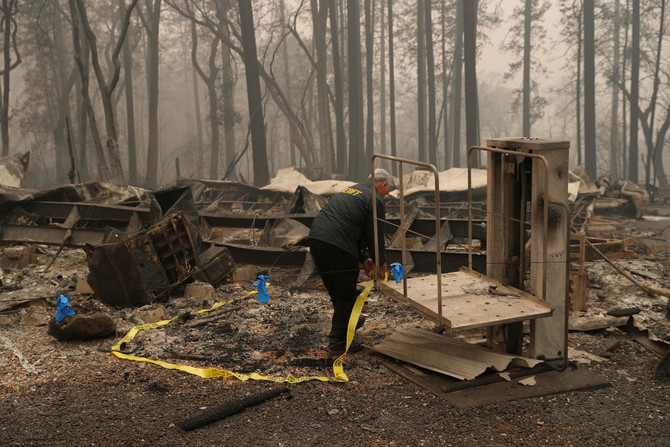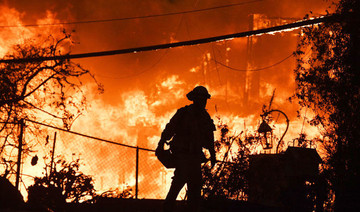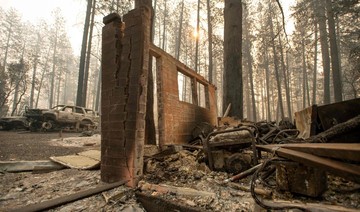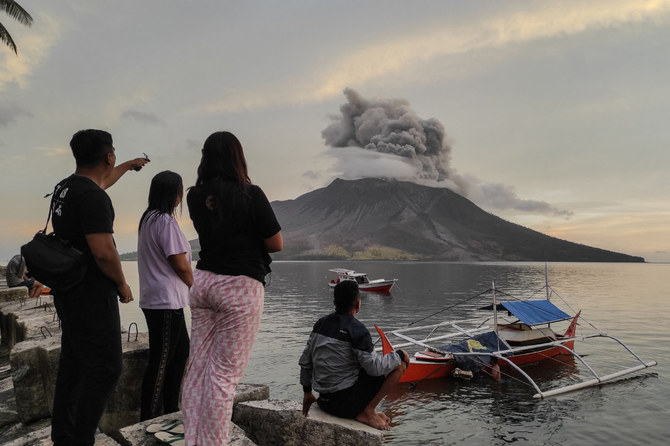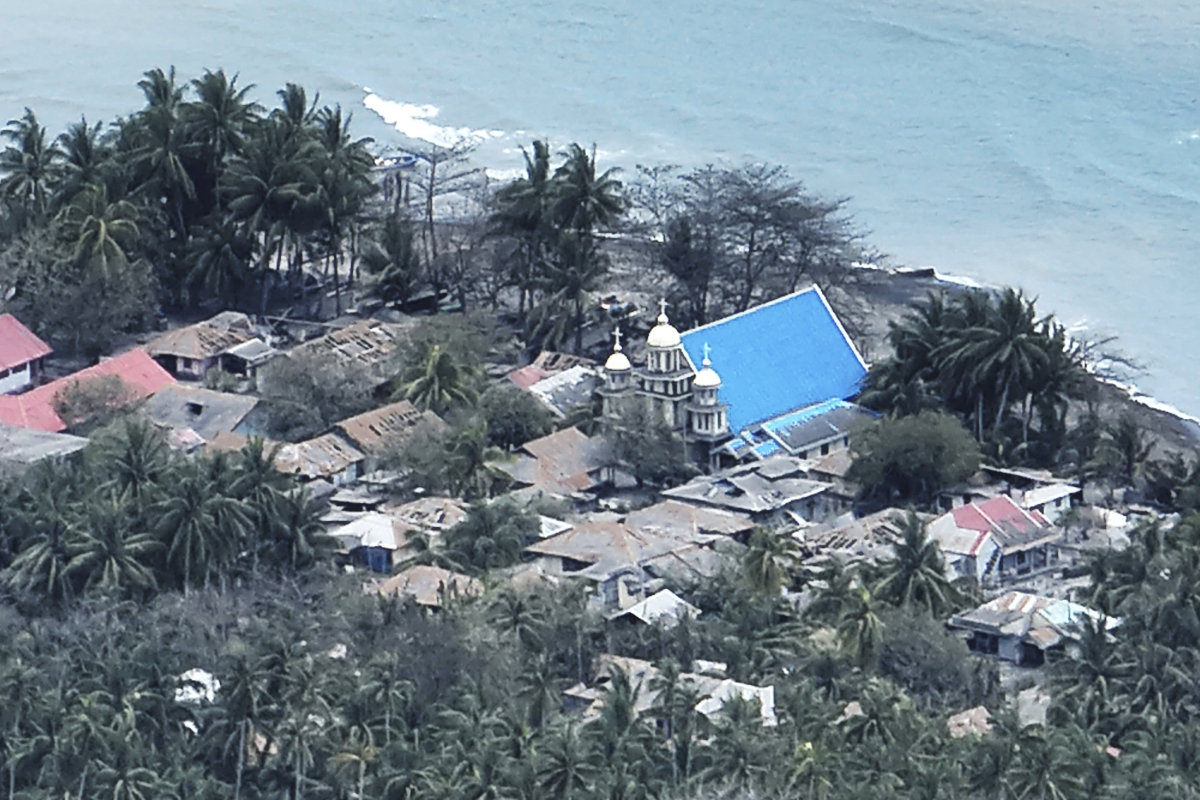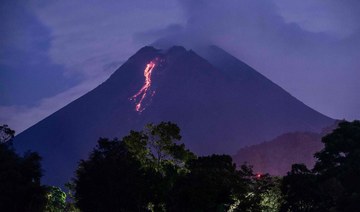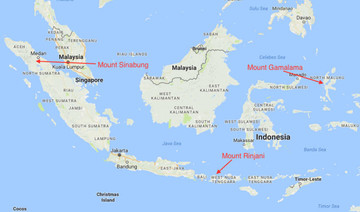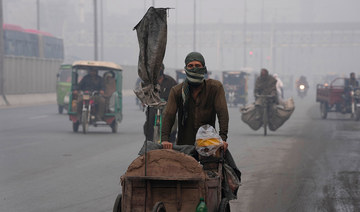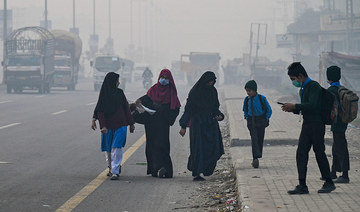PARADISE, California: A search for victims of a catastrophic blaze that reduced a northern California town to ashes intensified on Thursday, as authorities expanded to 630 the number of those reported missing in the deadliest and most destructive wildfire in state history.
At least 63 people have been confirmed dead in the Camp Fire, which erupted a week ago in the drought-parched Sierra foothills 175 miles (280 km) north of San Francisco and now ranks as one of the most lethal single US wildfires since the turn of the last century.
Authorities attributed the high death toll in part to the staggering speed with which the wind-driven flames, fueled by desiccated scrub and trees, raced with little warning through Paradise, a town of 27,000.
Nearly 12,000 homes and buildings, including most of the town, were incinerated last Thursday night hours after the blaze erupted, the California Department of Forestry and Fire Protection (Cal Fire) has said.
What was left was a ghostly, smoky expanse of empty lots covered in ash and strewn with twisted wreckage and debris.
Thousands of additional structures were still threatened by the blaze, and as many as 50,000 people were under evacuation orders at the height of the blaze. An army of firefighters, many from distant states, labored to contain and suppress the flames.
The revised official roster of 630 individuals whose whereabouts and fate remained unknown is more than double the 297 listed earlier in the day by the Butte County Sheriff’s Office.
Sheriff Kory Honea said nearly 300 people initially reported as unaccounted for had been found alive. He said the list of missing would keep fluctuating with names being added and others removed, either because they turn up safe or are identified among the dead.
The higher confirmed death toll, and rising number of those unaccounted for, were revealed at an evening news briefing by Honea, who said the remains of seven more Camp Fire victims had been located since Wednesday’s tally of 56.
The sheriff has asked relatives of the missing to submit DNA samples to hasten identification of the dead. But he acknowledged some of those unaccounted for may never be conclusively found.
The Butte County disaster coincided with a flurry of smaller blazes in Southern California, including the Woolsey Fire, which has been linked with three fatalities and destroyed at least 500 structures in the mountains and foothills near the Malibu coast west of Los Angeles.
The latest blazes have capped a pair of calamitous wildfire seasons in California that scientists largely attribute to prolonged drought they say is symptomatic of climate change.
The cause of the fires is under investigation. But two electric utilities have said they sustained equipment problems close to the origins of the blazes around the time they were reported.
The White House said on Thursday that President Donald Trump, who has been criticized as having politicized the fires by casting blame on forest mismanagement, plans to visit the fire zones on Saturday to meet displaced residents.
Cal Fire said that 40 percent of the Camp Fire’s perimeter had been contained, up from 35 percent, even as the blaze footprint grew 2,000 acres to 141,000 acres (57,000 hectares). Containment of the Woolsey fire grew to 57 percent.
But smoke and soot spread far and wide. Public schools in Sacramento and districts 90 miles (145 km) to the south, and as far away as San Francisco and Oakland, said Friday’s classes would be canceled as the Camp Fire worsened air quality.
Those who survived the flames but lost homes were moving in temporarily with friends or relatives or bunking down in American Red Cross shelters.
At a shelter set in a church in nearby Oroville, a bulletin board was plastered with dozens of photos of missing people, along with messages and phone numbers. Church officials posted lists of names they received in phone calls from people searching for friends and family. Evacuees are asked to check the boards to see if their names appear.
Many others found haven at an encampment that sprang up in the parking lot outside a still-open Walmart store in Paradise, where dozens of evacuees pitched tents or slept in their cars. Part of the lot was roped off as a distribution center for clothes, food and coffee. Portable toilets were also brought in.
Evacuees milling in the parking lot faced morning temperatures that dropped to just above freezing and many wore breathing masks for protection from lingering smoke.
Nicole and Eric Montague, along with their 16-year-old daughter, showed up for free food but have been living with extended family in the neighboring city of Chico, in a one-bedroom apartment filled with 15 people and nine dogs.
They recounted being stunned at how swiftly the fire roared through Paradise the first night.
“We didn’t have any time to react,” Eric said. “The news didn’t even know the fire was coming. It just happened so quick.”
Nicole said she fled once her home’s mailbox caught fire and neighbors’ propane tanks began exploding. Facing walls of flames and traffic gridlock, her evacuation with her daughter was so harrowing that she called her husband to say farewell.
“I called him and said, ‘Honey, I’m not going to make it. I love you,’” Nicole said.


